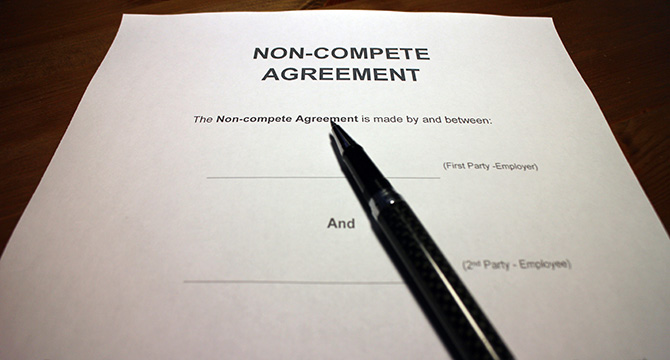
Against the backdrop of a continuing trend of low rates of unemployment throughout the United States, there has been a recent surge of people searching for new and better jobs. As a result, there has also been increased attention paid to restrictive covenants and an increase in litigation as employers seek to protect their confidential information and prevent a loss of business. Covenants restricting competition and protecting confidential information are generally creatures of state law. Their enforceability varies widely; from California, where they are virtually unenforceable, to Florida, where employers generally have the upper hand. While some states have engaged in efforts to follow in the footsteps of California, those efforts have largely been unsuccessful because state legislatures have been unable to muster the necessary votes to make it happen. What does this mean if you are considering a new hire who is saddled with an employment agreement that contains non-competition and/or non-solicitation provisions? There are several important considerations to be mindful of as you pursue this course of action.
As a threshold matter, you should know that regardless of the states where you operate, if you are faced with litigation by the former employer, the judge assigned to the case will look very closely at your new employee’s pre-hire conduct as he/she exited the former employer. There may be a number of legitimate defenses to enforcement of the underlying employment agreement, which may include one or more of the following: (1) the scope and duration of the agreement is too broad and/or too long; (2) the agreement lacked adequate consideration because it was not executed at the inception of employment; (3) the agreement was not properly transferred to the “current” former employer during the course of a series of mergers and acquisitions; (4) the current employer engaged in a prior breach by failing to pay the employee everything he or she was entitled to; or (5) the former employer failed to implement a new agreement when the individual experienced a material change in job duties, salary or title.
While courts will apply the relevant case law to the appropriate jurisdiction, judges who hear covenant disputes are acting as courts of equity, meaning they weigh all of the evidence to determine who is right and who is wrong. Part of that weighing is a character analysis of the employee’s conduct to determine whether any confidential or proprietary information was taken. At the same time, judges also want to know whether your new employee was honest and forthright. Judges will also want to know if your new hire was evasive in identifying his/her new employer prior to his/her exit or, worse yet, did he/she lie about his/her true intentions? If there is any evidence of improper conduct, you should be prepared for some form of adverse outcome. As the Jesuit priest who married my wife and I would tell us, “You should always take the high road.” Let’s hope your new hire did as well.
So, what do you do ahead of time to prevent this potential nightmare? First, you should ensure that any communications with your new hire, such as the offer of employment letter, contains specific acknowledgements that he/she will not take any confidential or proprietary information. Second, consider whether the new hire should seek his/her own counsel within the context of the hiring process or whether you want your own counsel to provide some form of consultation. Of course, if the new hiring employer ignores the validity of prior covenants, it will potentially expose it to independent claims for tortious interference with contractual relations or advantageous business relations. At the end of the day, the most important consideration is how your new hire walked out the door of his/her prior employer.
